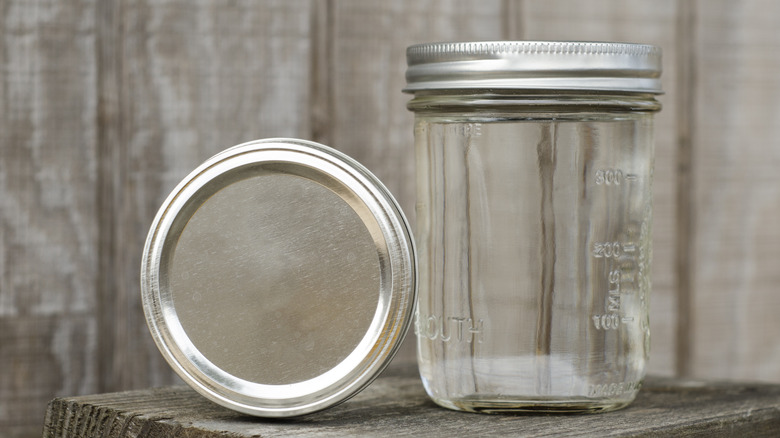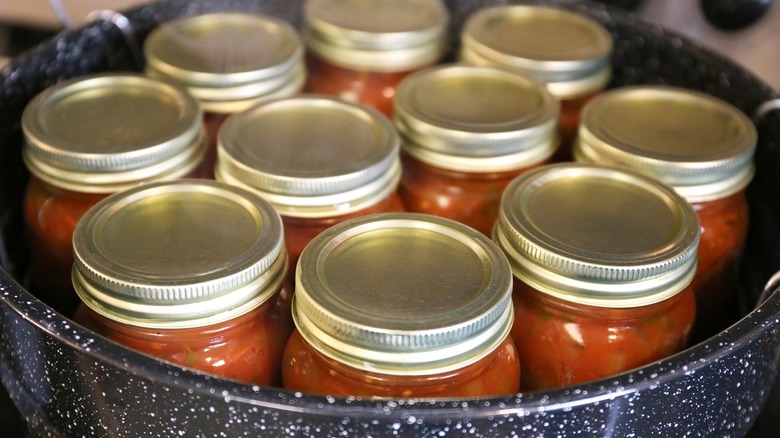Do You Have To Use Warm Lids When Home Canning?
If you do a lot of home canning, then you've probably read instructions that call for you to wash and sterilize your canning jars before using them, in a process similar to these recommendations made by Simply Recipes. Washing jars and lids before use is a part of preparing your kitchen for home canning, and even if you're using brand-new jars, they should still be washed before being filled, as Home Cook World reports. In addition to washing, some canning recipes will call for heating the metal lids before use, by placing them in a pot of boiling water until they're ready to be placed on your jar of food. But is this step really necessary?
According to Garden Betty, the Ball Canning test kitchen removed the recommendation to warm the lids in 2014, but it wasn't something the company widely publicized right away. Here's why you shouldn't warm your lids before you can.
Pre-heating can lead to an improper seal
Healthy Canning states that canning jar lids shouldn't be heated before use because heating the lids before placing them on the jar will cause the sealing compound on the underside of the lid (also called a gasket) to soften too soon and that can lead to an improperly sealed jar.
Since this softening is meant to happen during the canning process to help the vacuum seal on the jar, placing a lid in boiling water to soften before use can cause the gasket to seal prematurely, which can lead to jars having a weak seal or unsealing during storage, according to Country Living. And even the Ball Corporation recommends only washing lids in hot soapy water before use. So if the largest canning jar company doesn't recommend heating lids before use, how did this misconception become commonplace?
According to information shared by Healthy Canning, this recommendation was the correct process prior to 1970 because back then the sealing material on the underside of the lid was made from a thicker adhesive made from latex, which needed to be warmed first in order for it to adhere to the rim of the jar. However, today's lids no longer use this material, so this step isn't needed. This misconception serves as a reminder to always follow the most up-to-date canning guidelines, as well as manufacturer's instructions, to get the best jar seal and the safest, best-quality canned food.

